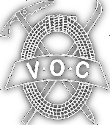VOC trips are organized by members like yourself, not professional guides. The trips go into wilderness areas where assistance is unavailable and unexpected events can occur. You could be seriously injured or die. You are responsible for your own actions. Please use caution.
Advanced crevasse rescue practice · Sat. Jun. 4th, 2016 - Sun. Jun. 5th, 2016
Warning: This is an old trip - it already happened
Warning: This is a tentative trip : dates may change
- Details Page: Where you can see brief trip details (publicly viewable).
- This trip does not have an associated Wiki Page.
- This trip does not have an associated Message Board Thread.
- Signup Page: Where you can signup, bail, edit participation entries, see/email members on the trip, etc.
- Wikitext Page: From where you can cut and paste information formatted for the wiki.
- Printable List Page: Which generates a printable list of participants.
- Edit Page: Where the trip organizer can edit the entry for this trip.
- Mark Going Page: Where the trip organizer can sign members up as "actually going".
- Modify Signups: Where the trip organizer can change signup classes.
Start: Saturday, Jun. 4th
End: Sunday, Jun. 5th
Pre-trip meeting location: email Faff
Description:
I need a reality check regarding my ability to deal with a crevasse fall on a two-persons rope team.
Existing reports, videos and personal experience regarding the probability to successfully arrest a crevasse fall are frightening and I would like to get some practice in situations as real as possible.
1) Terrain
People tend to practice when the crevasses are wide open, which is the time were you are the least likely to fall in and when the lips are icy and do not allow the rope to dig in. By doing this trip in June we will hopefully find some half-open crevasses or even dig through the snow bridges if needed.
2) self-arresting
The idea is to let 80kg haul bags fall in the crevasses and try to self-arrest. We will hopefully try many variations: leader falls, second falls, perpendicular to the crevasse, at an angle, while wearing your own pack, starting from an upright and relaxed position, etc. We will also experiment with different rope lengths and knots intervals on the rope.
3) Anchor building
If you manage to self-arrest, you need to build an anchor while in self-arrest position. Results should be interesting.
4) Hauling systems
Now that you have an anchor, you need to get your partner out. In a worst-case scenario he is injured and/or unconscious and cannot prussik out. You will then need to
4.1) Prussik down and up a loaded rope going over a crevasse lip to check on them, get their pack and rescue gear that you could use.
4.2) Set up a hauling system to bring them up. Is a 5:1 going to be enough given that your are alone to pull on the rope?
4.3) They are injured badly enough that you need to stay next to them as you bring them up. So you need to set up a hauling system in the crevasse to bring them to the lip.
How long is all of this going to take?
Prerequisites:
This trip is NOT instructional. Nobody will be there to teach, everybody will be there to learn, practice and experiment.
It means that you need to be completely comfortable knowing how to
1) Self-arrest
2) Set up hauling systems
3) Prussik up or down a rope
4) Build snow/ice anchors.
5) Rope up as if you are traveling on a glacier.
This trip is intended for people who go out in the mountains regularly as a two-persons team. It is NOT for people who have taken G1 or G2 a while ago and have never used these skills since then or are not actively interested in mountaineering. I want to keep it small so if there is enough interest I will likely handpick participants. I will not follow the first-come first-serve rule.
Posted: 2016-03-28 16:12:38
Last modified: 2016-05-30 11:34:20
